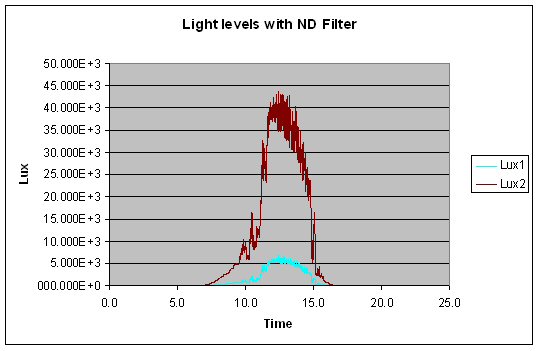I have been sidelined for a very long time due to work. I have only had a few days off from work in the last 2 months. Makes working on my AVC robot difficult if not impossible. But I have begun to work on my SUNDAR project a bit. I really need to know how strong an ND filter to put in front of my light sensor so that it can look straight into the sun without saturating the sensor.
So I purchased two new sensors from AdaFruit. These are based on the GA1A12S202 chip from Sharp. I supplied them with 5V and digitized the data at 25Hz. The digital data I averaged over 4 seconds. I then delayed 26 seconds before doing it again. This gives me an averaged reading for each sensor every 30 seconds.
The first day the results looked like this: 
Both sensors show identical results and saturate during the day. The noisy data is from cloud cover.
The second day I placed a single layer of an ND film over one of the sensors:
Although the voltage drop was not appreciably lower, it was enough to drastically lower the measured Lux. This is due to the logarithmic response (and not linear) of the sensor.
Although this would seem to have dropped the light intensity on the sensor into a good range, I am not convinced yet due to a few issues. The first is that the sensor was not perpendicular to the sun as it will be in the SUNDAR. Second there were two layers of glass between the sun and the sensors. Thirdly, the last two days have been not perfectly clear sky days. I will need to continue running this experiment for a few more weeks at least.
This experiment does have the advantage of proving that it gets lighter during the day and darker at night.
